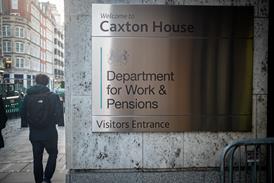Just 51% of baby boomers are on track to meet their retirement goals, according to new modelling from Vanguard, with middle-income workers most at risk of falling short.
The Vanguard Retirement Outlook used data from the Office for National Statistics and stochastic modelling to assess the financial preparedness of workers aged 61 to 64.
While low- and high-income cohorts fare better, the report found that middle-income workers faced substantial challenges in achieving retirement readiness, no matter which spending goal is considered, with only four in 10 meeting the necessary thresholds.
The presence or absence of defined benefit (DB) pension income is the most significant factor influencing whether baby boomers are on track for retirement.
The report found that 69% of those with DB income were “retirement ready”, compared with just 28% of those without. For recipients, DB pensions are projected to account for around half of total retirement income.
The transition to defined contribution (DC) schemes, accelerated by the introduction of automatic enrolment policy since 2012, has placed greater responsibility on individuals.
However, Vanguard said employers and policymakers needed to do more to promote the importance of saving into a pension, cultivate sound investment practices from a young age, and foster a culture that values investing.
It also highlighted the levers that baby boomers could pull to improve their retirement prospects. These included releasing home equity, delaying retirement, and spending less in retirement.
The report also highlighted the role of professional advice. Among wealthier boomers, 83% of those who received advice were on track to meet their retirement goals, compared to 74% who had not.
Vanguard’s report said that, while causality was uncertain, advice could add considerable value by helping individuals to align their savings with their individual goals and to navigate complex decumulation choices.
Policy recommendations in the report included lowering the age and earnings thresholds for auto-enrolment, as many in the industry have been calling for. The report also recommended increasing minimum contribution rates over time and accelerating the rollout of pensions dashboards to improve visibility and engagement.






















